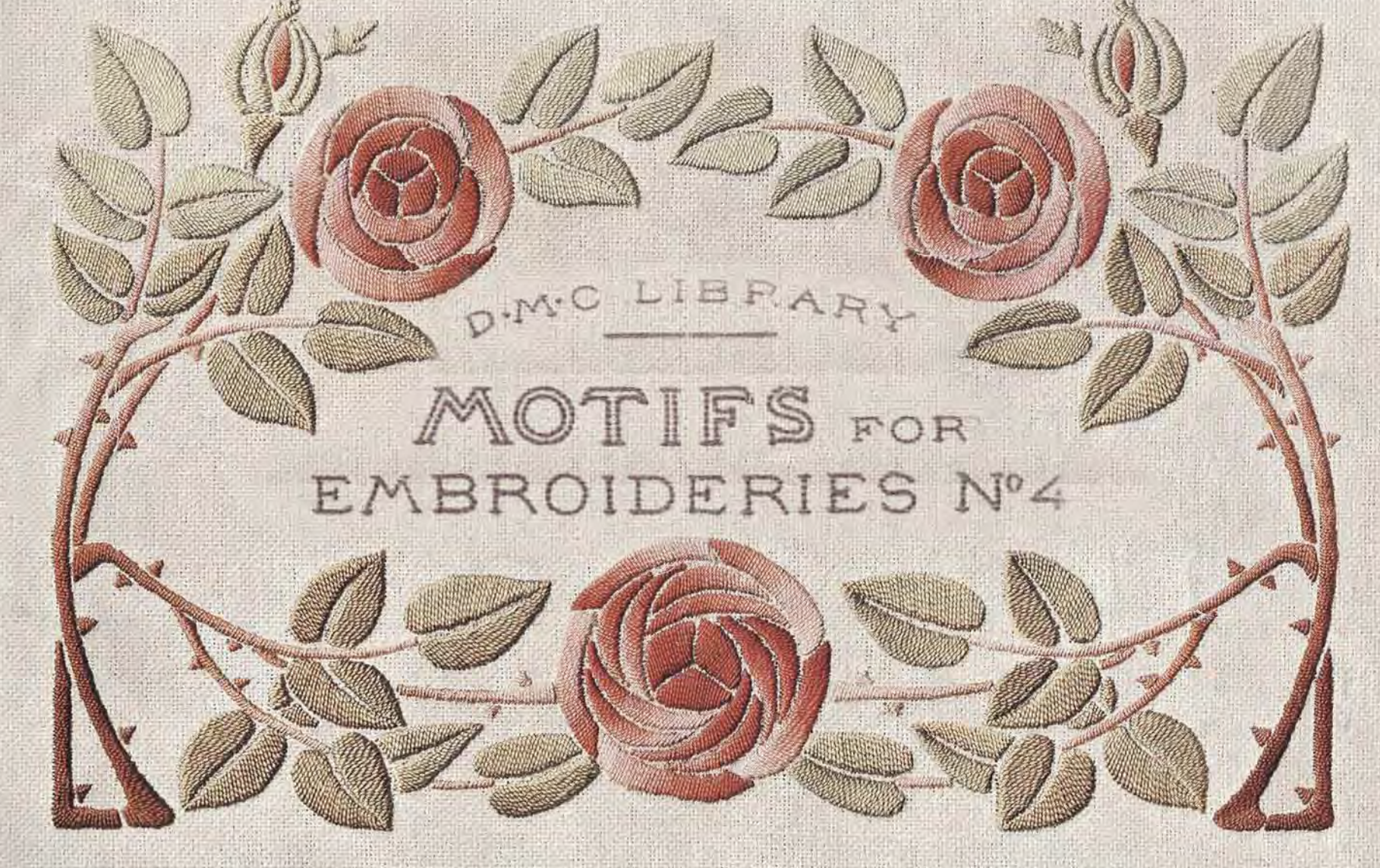Matching Embroidery Borders, and more
One of the first questions I have when starting a design is what is the best way to get it to match up as flawlessly and as easily as possible. Some are pretty straightforward, while others take creativity. I also hear a lot of comments that people are nervous about matching embroidery borders correctly, so I thought I’d create a brief tutorial on matching embroidery borders (and more), so you can feel more confident about using my designs.
First, the simplest ones. These are patterns that match up end to end, and the points that match are at the boundaries of the design. Often, machines will let you move to the corners of the design or have a function that will baste the outline of the boundary to help you with accurate placement. To line these up neatly as a border, you need to mark the long edge before you hoop, and you need to mark the corners that match up as you go along.
In this example, the red dashed lines show the boundaries of the design. As long as the bottom line is straight and the circled corners match, this design will repeat.
 The dashed aqua line shows a second match point that can be helpful when matching up deep scallops and/or cutwork. Since the bottom edge of the scallop doesn’t touch the next design, it may be more helpful to match the ends of each scallop. You can measure the distance from the bottom of the design (red line) to the top of the scallop (aqua line), and use both lines to help you keep the border repeating in a straight line. This is especially helpful when doing cutwork, since you will be trimming away the fabric where the bottom line was marked, and will need an additional guideline.
The dashed aqua line shows a second match point that can be helpful when matching up deep scallops and/or cutwork. Since the bottom edge of the scallop doesn’t touch the next design, it may be more helpful to match the ends of each scallop. You can measure the distance from the bottom of the design (red line) to the top of the scallop (aqua line), and use both lines to help you keep the border repeating in a straight line. This is especially helpful when doing cutwork, since you will be trimming away the fabric where the bottom line was marked, and will need an additional guideline.
Next, a slightly more complicated design. This time, you still need to match the pattern along a straight line at the bottom, but the design doesn’t match up at the corners. You need to overlap the designs slightly when matching them up.

The dashed red line shows the match point, but the dashed yellow line shows the boundary of the right hand pattern piece. They need to overlap significantly in order to repeat without a gap, but the match is very flexible. The stems from one piece fall under the flowers of the next piece, so even if you don’t get it perfect, no one will ever know.
Since the joins are hidden and each repeat is an individual file, it also means that you can start to angle this pattern around a curve without it being obvious. This is helpful when working with a shaped hem or a train, for example.
In the next example, the yellow dashed lines show the outside edges that will line up. However, the yellow circles are around the match points. Notice that the leaves from each section extend past the match point, so the edge of the leaf will be the design boundary. This means you can’t use the boundary as the match point on this design or you will have a gap between the pieces.

The benefit of overlapping this design is so that you have as few critical match points as possible. The design only needs to match at the scallops, which is a little flexible, and at the waving vine down the center, which is exact. If the design split anywhere else, the leaves and flowers would have multiple match points, or it would be more difficult to repeat the design, because there wouldn’t be a break point at each scallop.
In order eliminate guesswork, I added alignment stitches along the red dashed lines in this design. You will need to mark the yellow dashed lines before you hoop, and then the red dashed lines are stitched out and will need to match up as you move through each section. Notice that at the bottom of the design, the yellow circles are around two sets of L-shaped stitches that will form an inverted T when lined up.
Finally, designs that aren’t straight borders are going to present some unique challenges since there is no obvious line for matching up the pieces.
For example, the 18th c. pocket pattern is split into 7 pieces so it can fit into a 5×7 hoop. Splitting it along a simple grid would mean many exact match points, cutting straight across leaves and flowers. Instead, the design splits where stems meet flowers, making any close match almost invisible. Notice how the leaves and tendrils from the lower sections nest into the top section.
This design has alignment markings to help match up all 7 pieces of the pocket. Marks at the center and edges of the design share at least 2 points that will match up and form a T or + when correctly aligned. The only exact match is the outer border. If this still proves difficult, I also included a color change so it can be omitted altogether.
I would recommend marking a line down the center of the pocket before you hoop (vertical yellow dashed line), since all pieces will have alignment marks along that line. If needed, you can also mark horizontal lines across the bottom of the sections as you work, just for extra assurance that the pieces are squared up.
In the future, I expect there will be even more complicated matching as I move into designs for waistcoats and gowns that have many more pieces and must fit a pattern exactly. With careful planning and plenty of alignment marks, I hope even the most complicated designs will be easy to stitch out. Of course, should you run into difficulties, I am always willing to answer questions about matching embroidery borders and other designs!
For further learning about machine embroidery and matching embroidery designs, visit our classroom.



 Previous Post
Previous Post Next Post
Next Post
